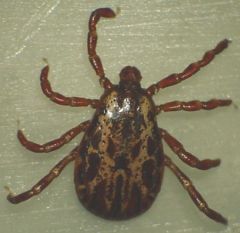

#Tick bullseye skin#
Here’s what you may see on your skin during each stage. It’s a common sign of Lyme disease, but it’s not the only sign.

These little rascals are also known as ticks, arachnids that feed on blood to survive. If you are bitten by this tick and develop Lyme disease, you may see a bull’s-eye rash. The progressive climate change has probably promoted the growth of tick species in Italy and many experts think that the reported cases will probably rise.Ī tick bite can occur in any season, but ticks are particularly common from early Spring to late Summer!Īfter long walks in the hot city centre of Milan, who wouldn’t fancy the freshness of hiking in Italy, maybe on one of the countless trails of the Dolomites?Įnjoy the breeze but don’t lower your guard! Just like you, tiny and seemingly harmless monsters enjoy the humidity of trees and parks. Recent studies demonstrated that this problem is not limited to wild areas, but involves also plains and suburban zones. More informationĬDC Pictures of Lyme disease rashes and rashes that look similar.According to the Italian Health Ministry the most affected regions are in the north: Friuli Venezia Giulia, Liguria, Veneto, Emilia Romagna and Trentino Alto Adige, while the south of Italy reported few cases. Is not caused from multiple tick bites, but occurs as a reaction when It may be difficult to diagnose Lyme disease if a person does not haveĪ person may experience multiple rashes, such as those you see here. Muscle/joint pain and fatigue) are similar to other ailments. The early signs and symptoms of Lyme disease (fever, chills, headache, In most Lyme infections, one of the first symptoms you’ll notice is a rash. Other symptoms of Lyme’s include: Painful, swollen joints and lymph nodes-usually the knees and larger joints get afflicted. All of those symptoms are also common in the flu. Typically it may be seen in the groin, back, arms, thighs etc.

Not everyone with Lyme disease gets the rash. Many people are steered to a specialty lab such as Igenex to get an accurate diagnosis, and this can be expensive.The rash has been reported in about 60 to 80 percent of Lyme disease cases.people who develop Erythema Migrans dont recall getting bitten by a tick. Common symptoms of Lyme disease within the first 30 days after a tick bite include: A circular-shaped, bulls-eye rash called erythema migrans. One of the most common symptoms is a ring-shaped rash that looks like a bulls-eye. The trademark rash of Lyme disease is often described as a bulls-eye with a. Often appears on the thighs, groin, trunk and armpit. The bacteria are usually spread by tick bites.It does not always look like a bull's eye, but it does expand in size. A bullseye rash (pictured here) signals Lyme disease, but other tick-borne illnesses include ehrlichiosis, anaplasmosis, and tularemia, although the risk for each varies depending on the tick’s. As the rash increases in size, it often clears in the middle and develops a red ring around the outside, so that it has a “bull's eye” appearance. The most common early sign of Lyme disease is an expanding skin rash called "erythema migrans." It begins as a reddened area near the tick bite.


 0 kommentar(er)
0 kommentar(er)
